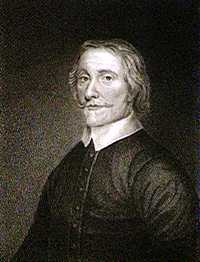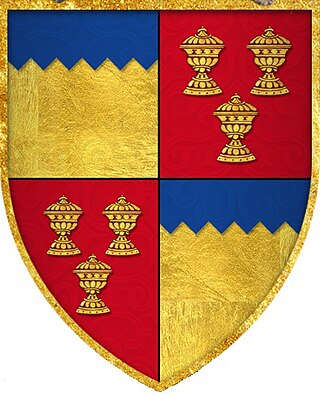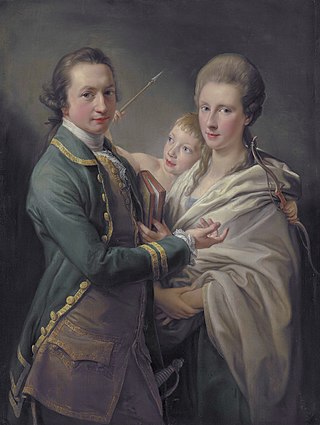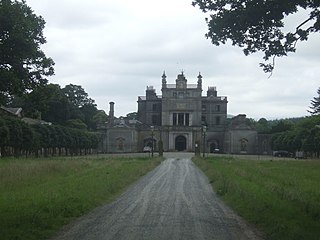Related Research Articles

Viscount Valentia is a title in the Peerage of Ireland. It has been created twice. The first creation came in 1621 for Henry Power. A year later, his kinsman Sir Francis Annesley, 1st Baronet, was given a "reversionary grant" of the viscountcy, which stated that on Power's death Annesley would be created Viscount Valentia. Annesley, a member of an influential Anglo-Irish family which descended from Newport Pagnell in the County of Buckinghamshire, was a favourite of James I, who granted him land in Ireland, notably the fort of Mountnorris in County Armagh. He was knighted in 1616, created a baronet, of Newport Pagnell in the County of Buckingham, in the Baronetage of Ireland in 1620 and Baron Mountnorris, of Mountnorris in the County of Armagh, in 1628.
The Earl of Tyrone is a title created three times in the Peerage of Ireland.

Piers Butler, 8th Earl of Ormond, 1st Earl of Ossory also known as Red Piers, was from the Polestown branch of the Butler family of Ireland. In the succession crisis at the death of Thomas Butler, 7th Earl of Ormond he succeeded to the earldom as heir male, but lost the title in 1528 to Thomas Boleyn. He regained it after Boleyn's death in 1538.

John Beresford, PC, PC (Ire) was an Anglo-Irish statesman.

George de la Poer Beresford, 1st Marquess of Waterford, KP, PC (Ire) was an Irish politician, known as George Beresford, 2nd Earl of Tyrone from 1763 to 1789.
William Annesley, 1st Viscount Glerawly was an Irish politician and noble.

William Beresford, 1st Baron Decies was an Anglo-Irish clergyman.

Arthur Saunders Gore, 2nd Earl of Arran, KP, PC (Ire), styled The Honourable Arthur Gore from 1758 to 1762 and Viscount Sudley from 1762 to 1773, was an Irish peer and politician.
Baron La Poer, de la Poer, is a title in the Peerage of Ireland held by the Marquess of Waterford. Its creation is the sole instance in the law of the Kingdom of Ireland recognising a peerage by writ.
Henry de La Poer Beresford, 2nd Marquess of Waterford KP, PC (Ire) styled Lord Le Poer from 1783 until 1789 and Earl of Tyrone from 1789 to 1800, was an Irish peer.
Sir Tristram Beresford, 3rd Baronet was an Anglo-Irish soldier, politician and baronet.

Marcus Beresford, 1st Earl of Tyrone, known as Sir Marcus Beresford, 4th Baronet, until 1720 and subsequently as The Viscount Tyrone until 1746, was an Anglo-Irish peer and politician.
Richard Annesley, 6th Earl of Anglesey, known as The Lord Altham between 1727 and 1737, was an Irish peer and governor of Wexford. He is known for the doubts surrounding his claim to the barony of Altham, for the questionable legitimacy of his marriages and therefore of his son's claim to his titles, and for his arranging the kidnapping of his nephew, a rival claimant to his titles and estates. This incident is believed to have influenced part of the novel Kidnapped by Robert Louis Stevenson.
Lettice FitzGerald, 1st Baroness Offaly was an Irish noblewoman and a member of the FitzGerald dynasty. Although she became heiress-general to the Earls of Kildare on the death of her father, the title instead went to the next FitzGerald male heir when her grandfather, the 11th Earl of Kildare, died in 1585. In 1620, she was created suo jure Baroness Offaly by King James I of England.

Curraghmore near Portlaw, County Waterford, Ireland, is a historic house and estate and the seat of the Marquess of Waterford. The estate was part of the grant of land made to Sir Roger le Puher by Henry II in 1177 after the Anglo-Norman invasion of Ireland. Since then, the De La Poer Beresford family has owned these estates. It is the oldest family home in Ireland.
Elizabeth Annesley, Countess of Anglesey was the wife of Arthur Annesley, 1st Earl of Anglesey. They were married on 24 April 1638 in London. At the time of their marriage, her husband's style was The Hon. Arthur Annesley. In 1660 he inherited his father's title of Viscount Valentia, making Elizabeth a viscountess, and in the following year he was created Earl of Anglesey, making her a countess.
Thomas Cobbe (1733–1814), of the Newbridge Demesne in north County Dublin, was an Irish politician.
Sir John FitzGerald of Dromana was the last of the FitzGeralds of Dromana. He sat as MP for Dungarvan in the Irish Parliament of 1661–1666.
John Beresford, 2nd Baron Decies was an Anglo-Irish peer and clergyman.
Charles Cobbe, of Newbridge, was an Irish politician.
References
- 1 2 3 4 5 6 7 Burke, Bernard (1879). A Genealogical and Heraldic History of the Landed Gentry of Great Britain & Ireland. Harrison. p. 1301. Retrieved 10 January 2023.
- ↑ Irish Builder and Engineer. Howard MacGarvey & Sons. 1891. p. 151. Retrieved 10 January 2023.
- ↑ Cokayne, George Edward (1916). The Complete Peerage of England, Scotland, Ireland, Great Britain and the United Kingdom: Dacre to Dysart. St. Catherine Press, Limited. p. 111. Retrieved 10 January 2023.
- ↑ Ireland), Georgian Society (Dublin (1911). Records of Eighteenth-century Domestic Architecture and Decoration in Dublin. Society at the Dublin University Press. p. 68. Retrieved 10 January 2023.